
Jacaranda Journey

February, 2014
Passage Note #61: Las Perlas Archipelago, Panama
The beautiful Pearl Islands Archipelago (Islas de Las Perlas) consists of 90 named islands and over 100 unnamed islets just a hop, skip, and jump from Panama City in the Gulf of Panama (only 30 miles southeast). We spent four weeks in these popular cruising grounds from January16 to February 25, doing a counterclockwise circumnavigation and enjoying the secluded picture-postcard anchorages.

Over 200 islands in the archipelago

Over 200 islands in the archipelago



Starting and ending at Isla Contradora

Starting and ending at Isla Contradora
Pearls! Pearls! Pearls!
The islands were discovered in 1513 by Vasco Nuñez de Balboa and were named after the large and abundant pearls found there. In characteristic conquistador modus operandi, the Spanish brutally exterminated the indigenous population within two years of their arrival - to the point of needing to import slaves from Africa to harvest the oyster beds for them. Today, those living on the islands are descendants of these African pearl divers. Although they maintain a minimally subsistence life from fishing, the locals still harvest pearls today and sell them to visiting tourists. As a true pearlaholic, Linda couldn’t wait to go to the village of Casayo to see what pearls were available; but the white oyster pearls were too small for her jewelry and she was not interested in the larger brown pearls harvested from pen shells.
The most famous pearl from these islands is “La Peregrina” (The Pilgrim Pearl) - an enormous 31 carat pear-shaped treasure found by a slave in the mid-16th century. It has an impressive pedigree - first given to King Phillip of Spain who gifted it to his bride, Queen Mary I of England. After additional European royalty and aristocracy passed it around a bit, Richard Burton purchased it in 1969 for his wife Elizabeth Taylor. It was almost lost in a shag carpet in her Las Vegas hotel room until she heard a crunch between her dog’s teeth and retrieved it just in time. It sold as part of her 2011 estate auction for $11 million.
We also stopped on Isla San Telmo to see the corroding hull of a small submarine built in 1865 - a technological advance 50 years ahead of its time - ”a time capsule dating from the era of Jules Verne and the engineering triumphs of the 19th century.” The Submarine Explorer, the world’s first commercially viable sub, was built in Brooklyn for the Pacific Pearl Company to harvest pearls and was going to be sent to the Sea of Cortez in Mexico when it was abandoned on this island in 1896 due to problems with decompression sickness. It was long thought by locals to be a Japanese submarine from WWII.

One of the most legendary pearls, given to Elizabeth Taylor by Richard Burton

One of the most legendary pearls, given to Elizabeth Taylor by Richard Burton
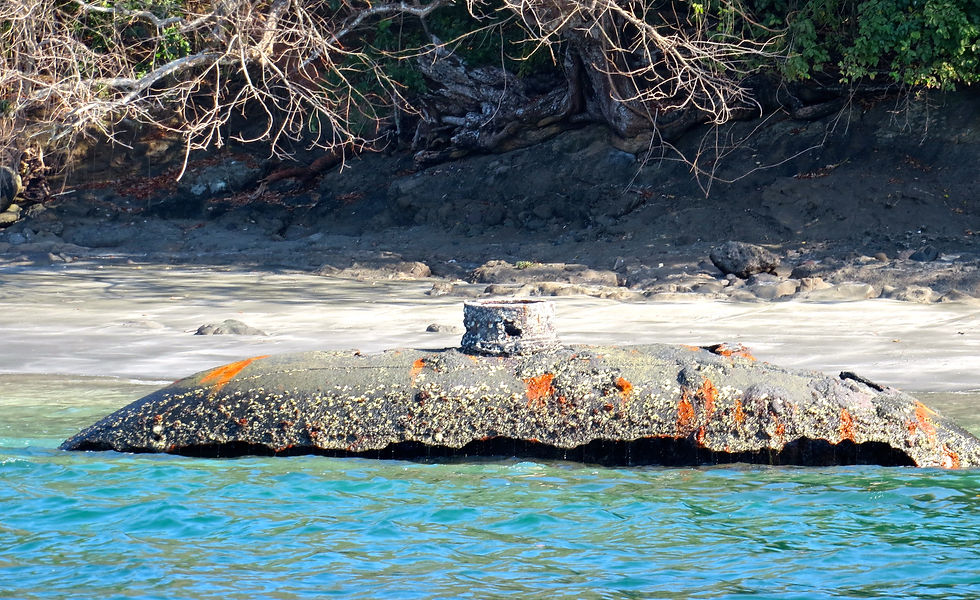
Old abandoned pearling sub built in 1865

Old abandoned pearling sub built in 1865

A far cry from La Peregrina! The small white ones are from oysters; the larger brown ones are from pen shells

A far cry from La Peregrina! The small white ones are from oysters; the larger brown ones are from pen shells
Cruising Las Perlas
Our recollections of one month of cruising in the Las Perlas Archipelago conjure up one overriding image:
Under sharp blue sunshine, Jacaranda sways in front of a coconut-palm fringed white sand beach of some uninhabited island, alone. The air is filled with undulating shards of blue/green dichroic glass: a serious colorful moth migration underway. Long strands of cormorants trace the horizon like black ribbons trailing in the wind. Circles of water churn with writhing bait boils and large flocks of seabirds rain down on them. As the setting sun leaves behind a technicolor sky, the day’s catch is on the grill.
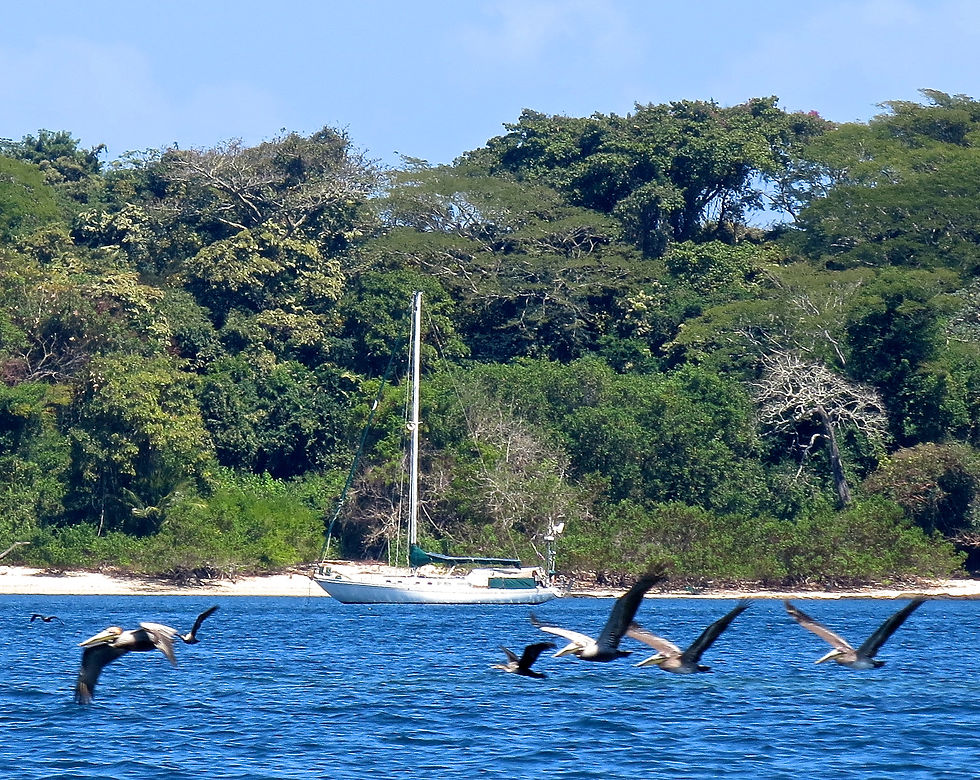


Green on top, blue underneath - streaking the sky with color

Green on top, blue underneath - streaking the sky with color
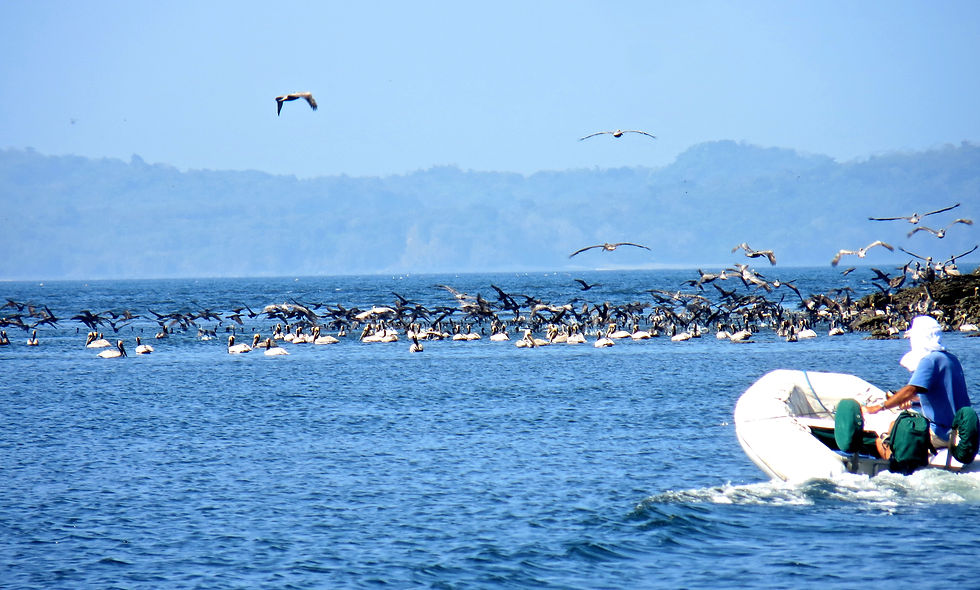
Fisherman Chuck investigating in the dinghy

Fisherman Chuck investigating in the dinghy
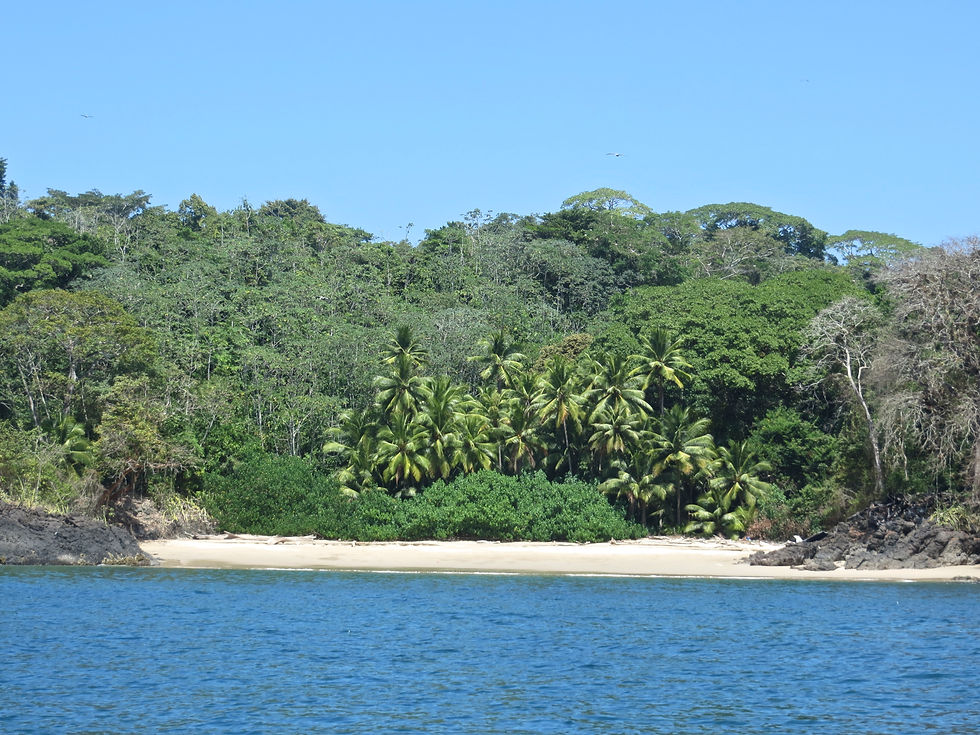
Palm fringed white sand beaches

Palm fringed white sand beaches
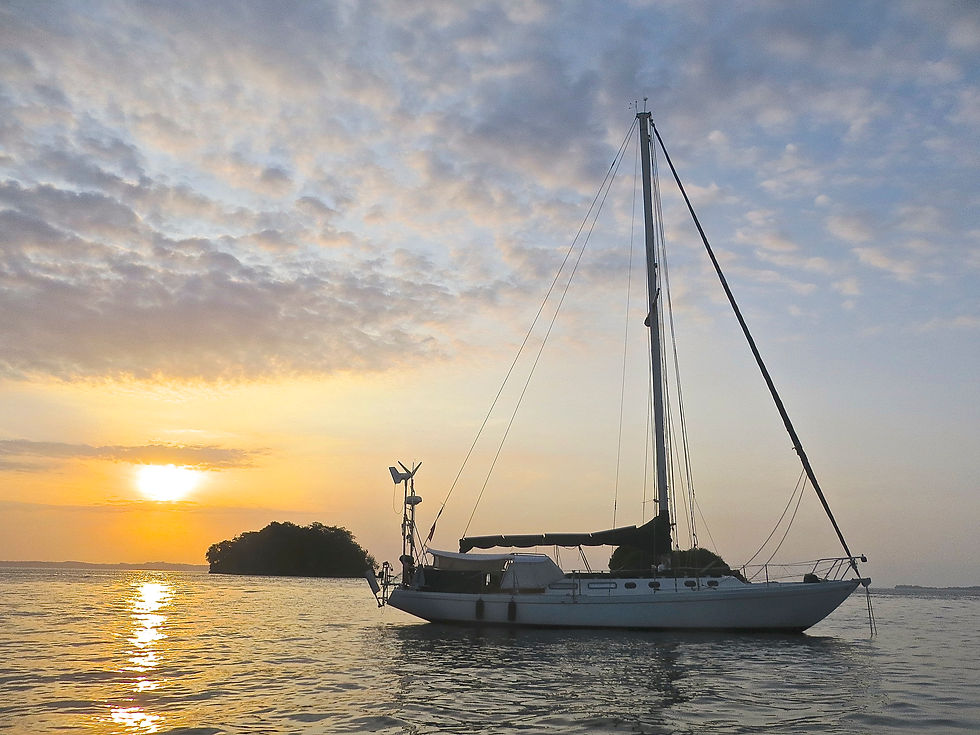

Our only disappointment was that we were unable to swim or snorkel because the inviting blue water had dropped 10 degrees in 4 days after a strong norther, bringing with it jellyfish and stingers. The few times we jumped overboard, we hightailed it out with welts. The lower temperatures were caused by the north wind blowing the warm surface water out of the Gulf of Panama; the only water to replenish it comes from cold subsurface water. This colder water also drove much of the game fish (tuna, mahi mahi, wahoo) out of the area. But the fishing from the dinghy was very good and it proved easy for Chuck to provide fresh fish for dinner almost every night - snapper, corvina, sierra, grouper.
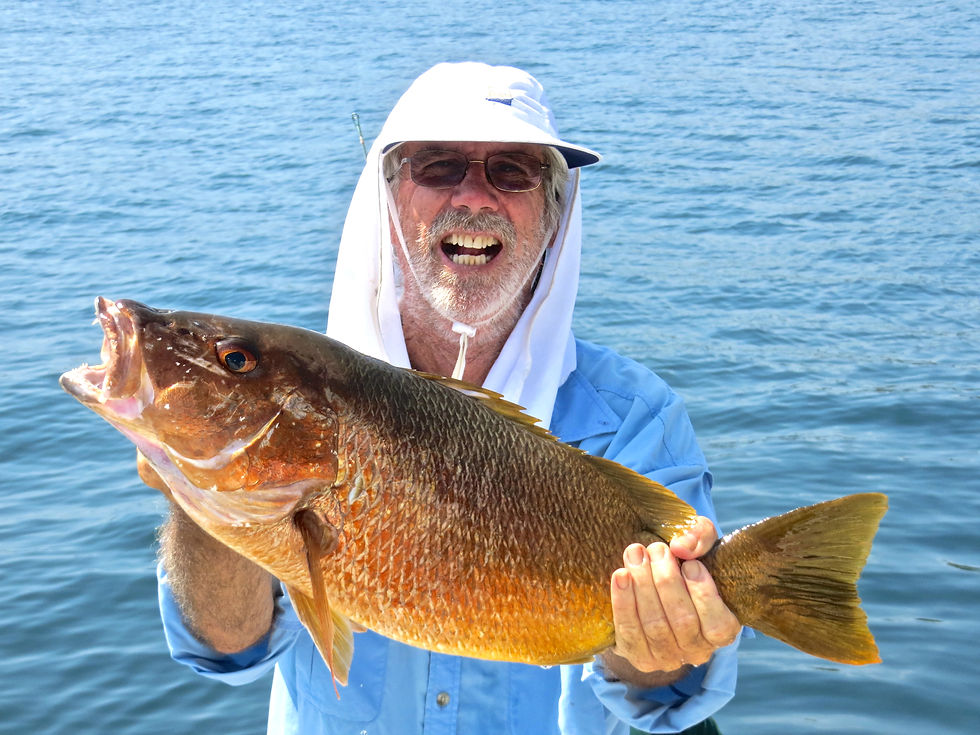

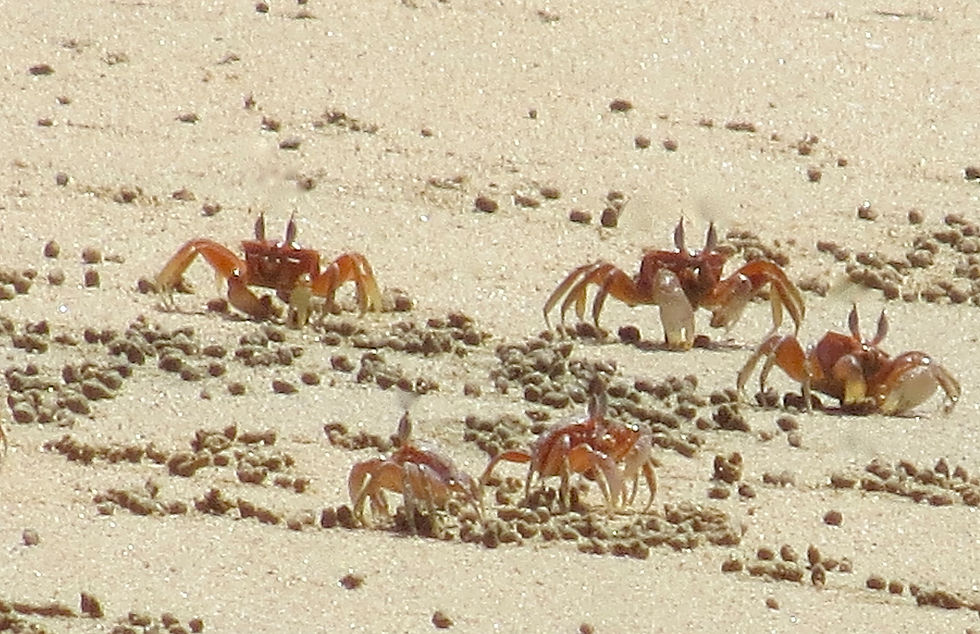

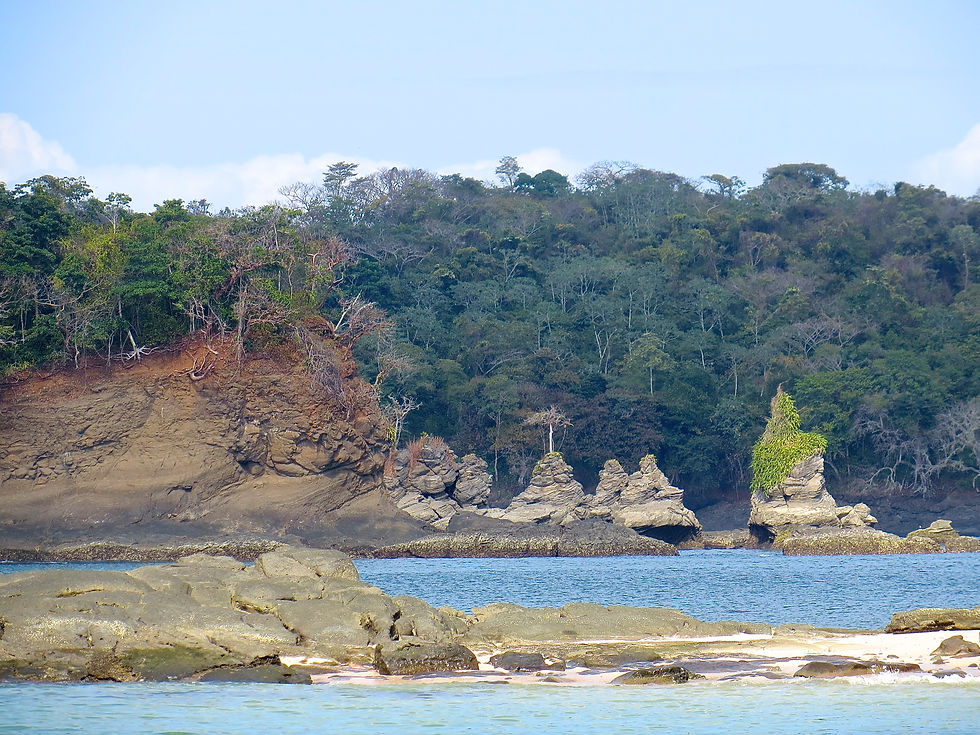
In San Telmo Bay, Isla del Rey

In San Telmo Bay, Isla del Rey

Stingers in the water prevented us from swimming

Stingers in the water prevented us from swimming
Beach walks yielded a plethora of cowrie, scallop and limpet shells....and coconuts. The bird life was plentiful and varied: pelicans nested in trees, herons and snow white egrets dotted the rocky reefs, and oystercatchers caught our attention with their unmistakable staccato calls. The butterflies constantly whizzing past us were actually not butterflies at all but a colorful Common Uraniid Moth (urania fulgens). Too bad we were too early to see the breeding humpbacks which arrive in July and stay through October.
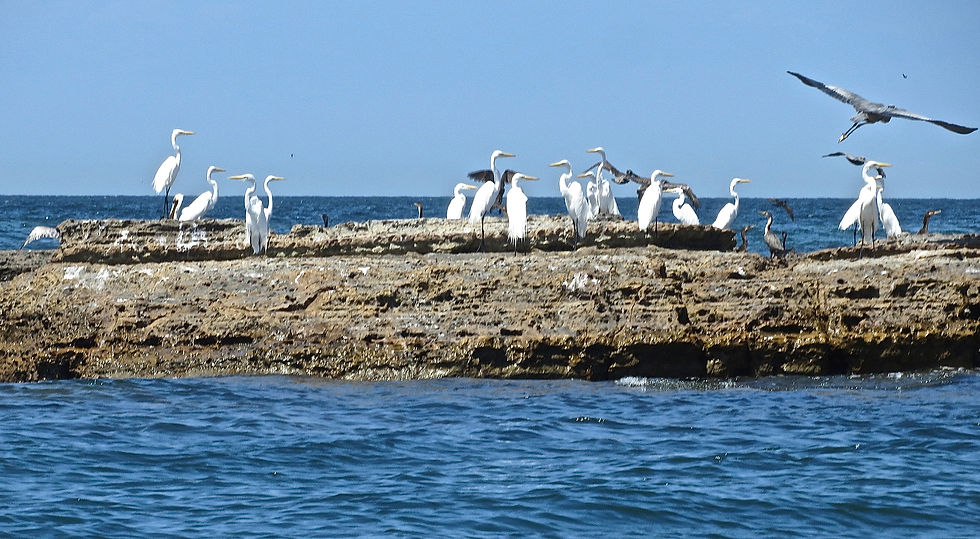

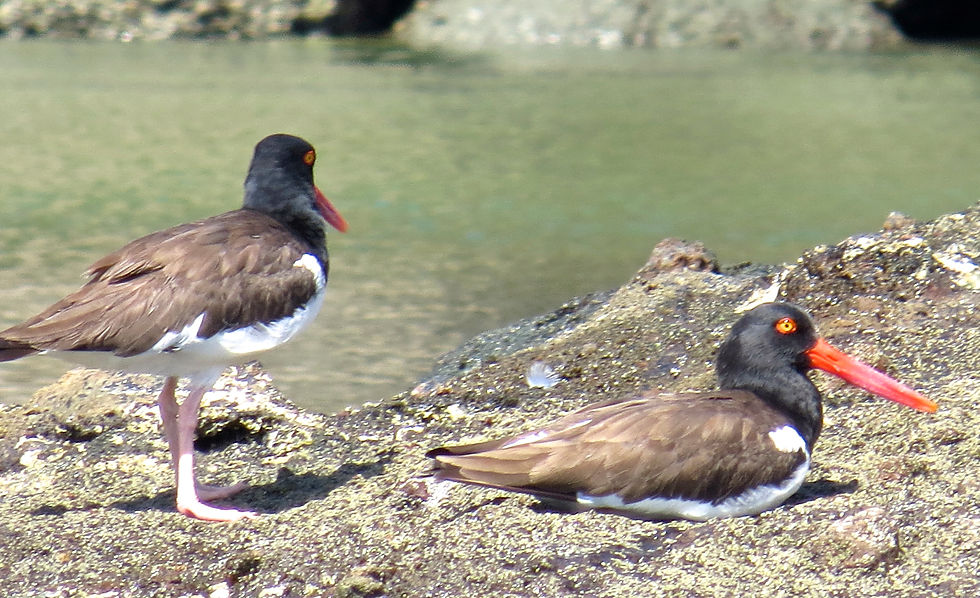

Light northerly breezes made the choice of anchorages easy. Fortunately, the 18-20’ low tide occurred during daylight hours and we would always try to plan our arrivals at this time. This is completely opposite to the normal philosophy of trying to squeeze into places on a rising tide in case one runs aground. However, since there are many uncharted rocks and reefs, this strategy meant we could usually see them breaking the surface and steer clear.
Using the Google Earth chartlets (that we made beforehand from the GE2KAP program when in internet range) with our computerized OpenCPN charting program on our netbook computer, we obtained very accurate and detailed snapshots of possible anchorages within the archipelago. This gave us the freedom to explore beyond the well-trodden destinations found in our two Cruising Guides (Bauhaus and Zydler). In fact over 50% of the anchorages we chose were not in the guide books.
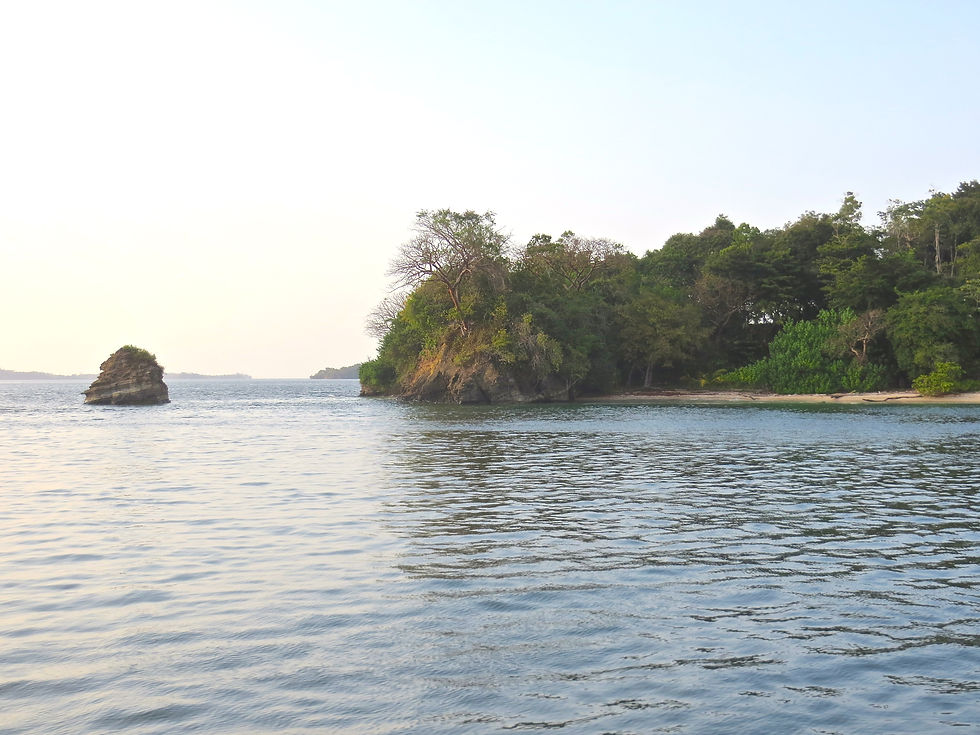
An 18 foot tide fluctuation

An 18 foot tide fluctuation
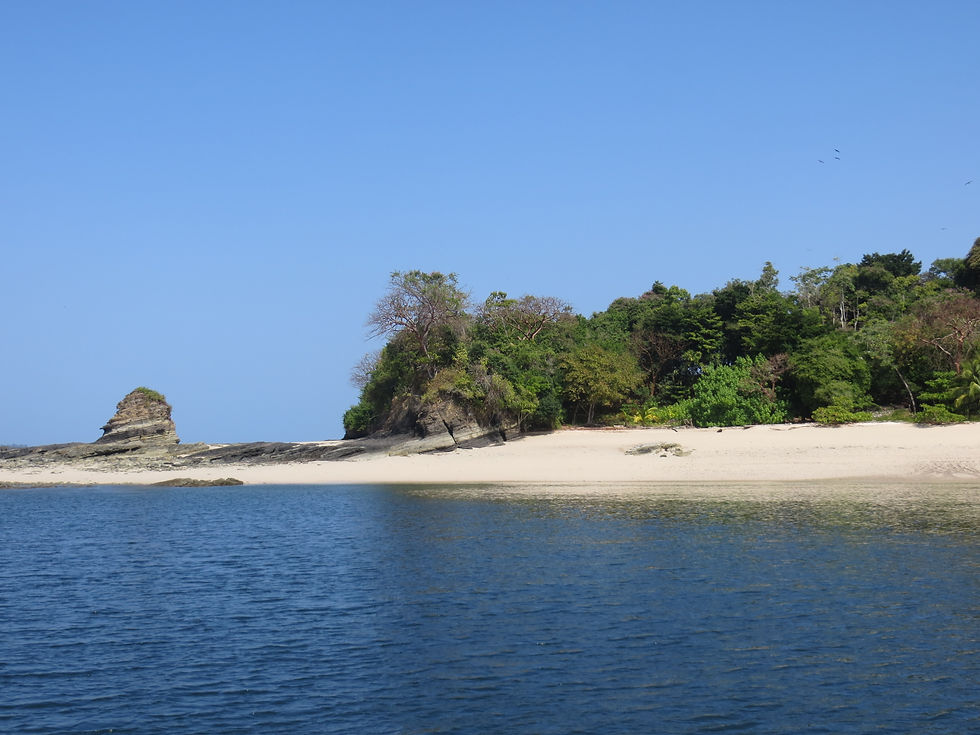

Unpopulated and Not.....
Surprisingly we had 90% of the anchorages all to ourselves. Once in a while a Panamanian fishing boat would pull in but would be gone the next morning. And once in awhile a panga with a few young men and their dogs would pull up on the sand....taking their dogs for a lovely beach walk so we naively thought at first....until they returned with iguanas in each hand. Although it is illegal to hunt and eat them, they are part of the islanders subsistence diet - the meat as well as the eggs.
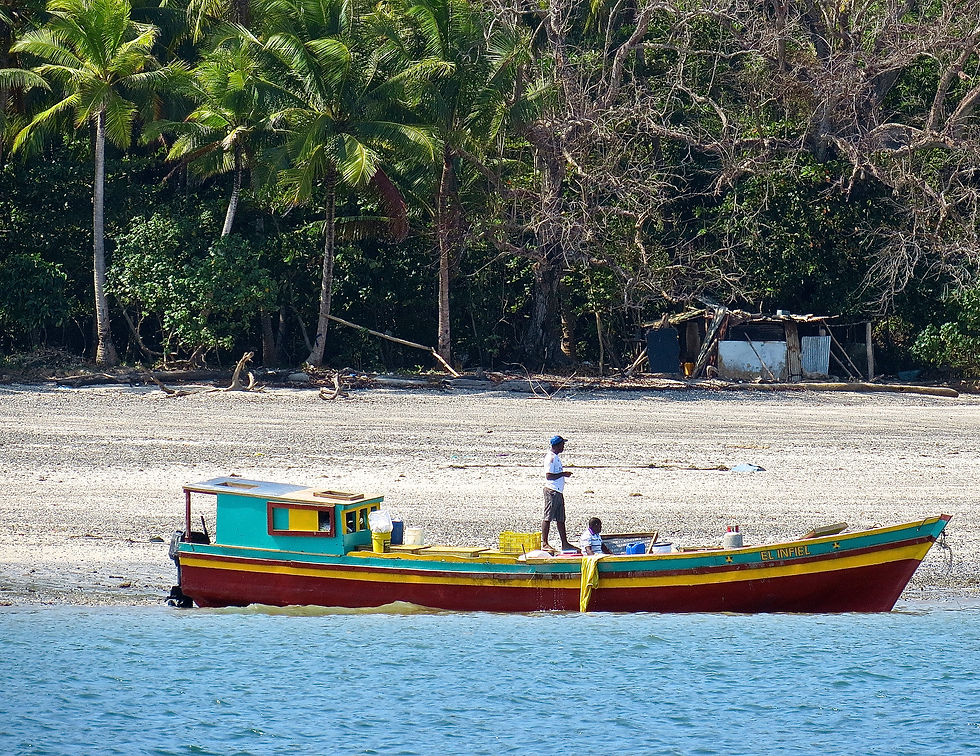

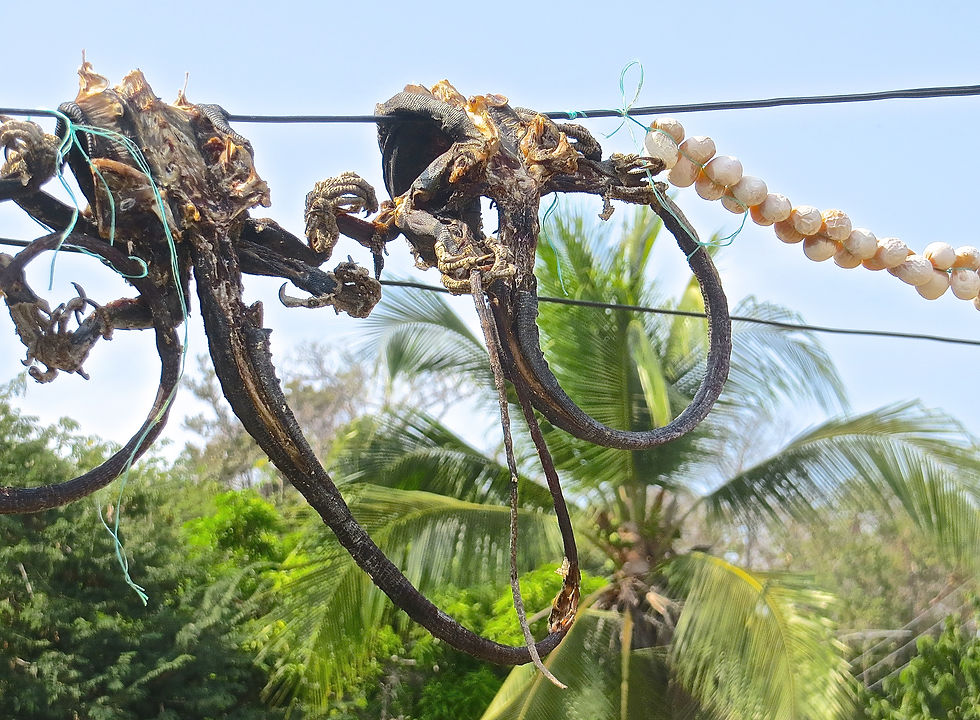
Although illegal, this is part of the islanders' subsistence diet

Although illegal, this is part of the islanders' subsistence diet
The exceptions to our solitude were in the more visited northern islands.
Isla Contadora or Counting House Island, once the accounting center for pearls being shipped to Spain, is where we started and ended our Perlas circumnavigation. It has a population of 350 and is the most accessible as a get-away for tourists and the well-to-do from Panama City, serviced by a regular ferry and an airstrip; it is a square kilometer and is great for walking among its 12 beaches and millionaire mansions (many of which are rented to vacationers since a tax evasion crackdown). It is the only island with a developed infrastructure, restaurants, hotels, and 3 small food stores. The Shah of Iran came here in 1979 after being ousted and briefly lived in his luxury home on the northwest shore. At the end of our month in the Archipelago, we stopped here to reprovision for a few staples (the markets are expensive) and go to dinner at Villa Romantica for Linda’s birthday. We explored the area by foot with Jacqui and Walter on s/v Jean Marie.

Our dinghy parked on the beach

Our dinghy parked on the beach



Villa Romantico restaurant

Villa Romantico restaurant
Isla Chapera, the “Survivor” island, is the site of filming for the television series, not only for the American version but for Argentina, Ukraine, Turkey, Israel, South Africa as well. It gets crowded on the weekends. When we returned to Chapera in the middle of February, we shared the anchorage with the megayacht, Vibrant Curiosity, whose 14 person staff swarmed and commandeered the beach, swept it, set up a volleyball net, tents, tables, BBQ grills, lots of coolers filled with food, and water toys for the guests for the day. The owner, a German billionaire who made a fortune producing screws, launched the $100 million yacht the same year he cut all his workers’ salaries in half for cost-saving measures. He sure knows about screws!
At Espiritu Santo Island, a very popular cruiser destination, we anchored off the western side of the island in front of our friends Debi and Victor on SV Serenity. Chuck and Victor had a good day fishing and it was fun to share a dinner and beach walk together.
Besides Casaya, we visited two small fishing villages - Pedro Gonzalez (Pedro Gonzalez Island) and La Ensenada (Isla del Rey) - to replenish our gasoline and bread. It was interesting to meet the Perlas inhabitants and see how they lived their isolated lives in their remote pastel colored communities.
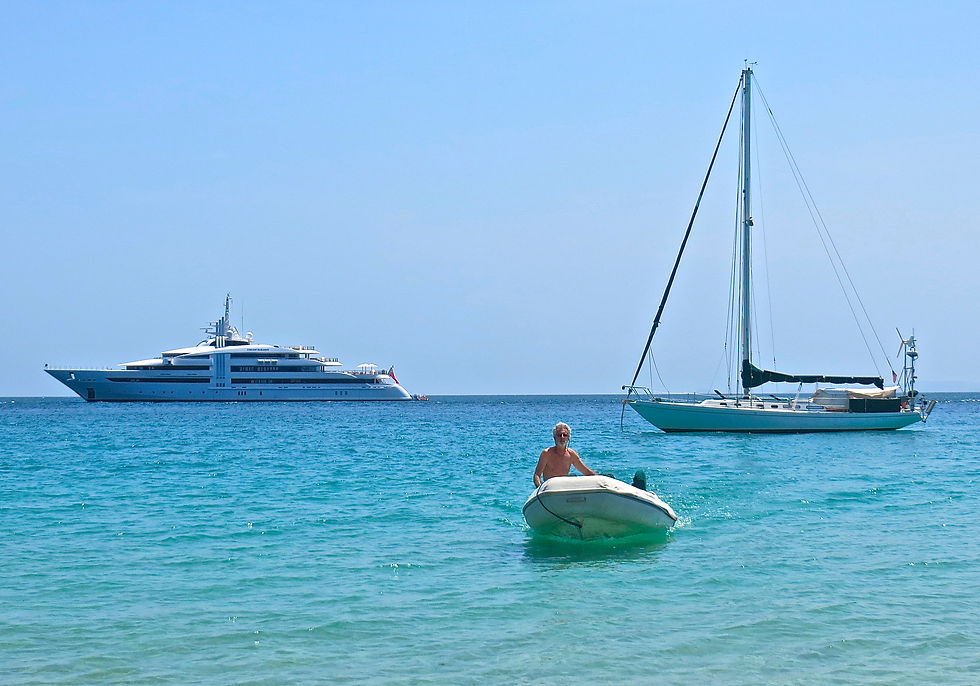
MV Vibrant Curiosity with Jacaranda

MV Vibrant Curiosity with Jacaranda

Successful day of fishing with Victor from SV Serenity

Successful day of fishing with Victor from SV Serenity
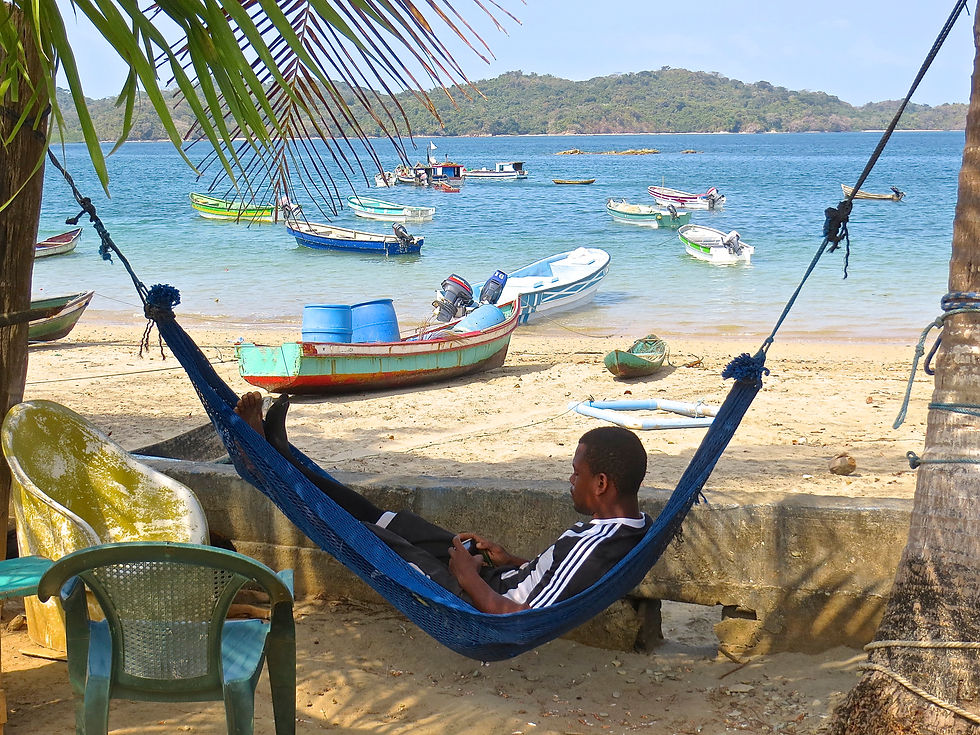
La Ensenada village

La Ensenada village
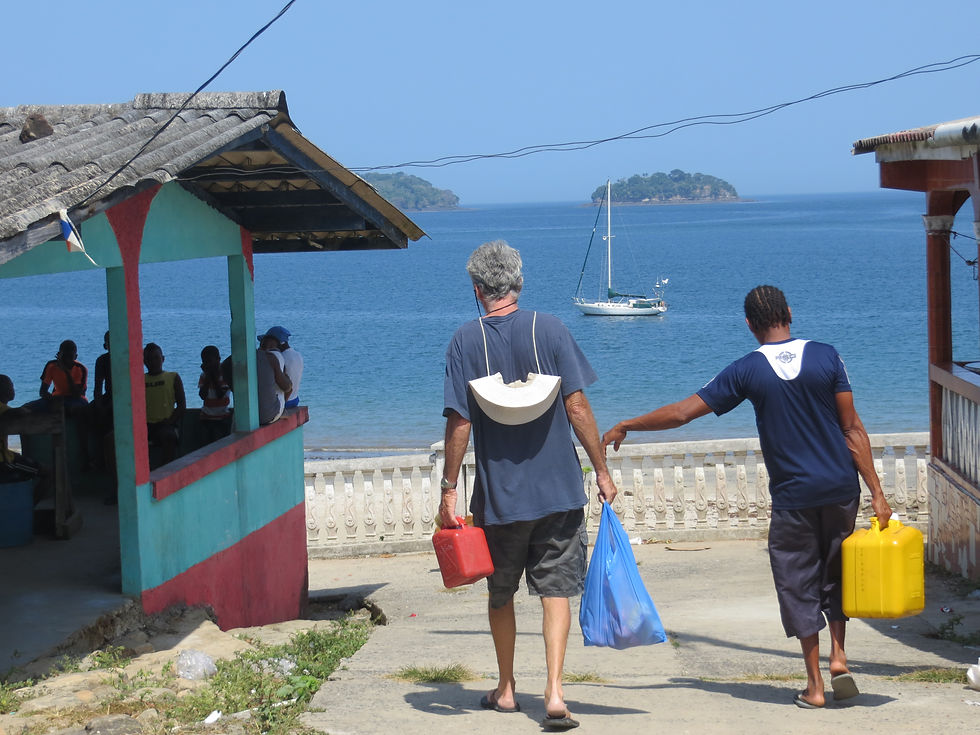
Provisioning for bread and diesel

Provisioning for bread and diesel

Mending a net in Casayo Village

Mending a net in Casayo Village
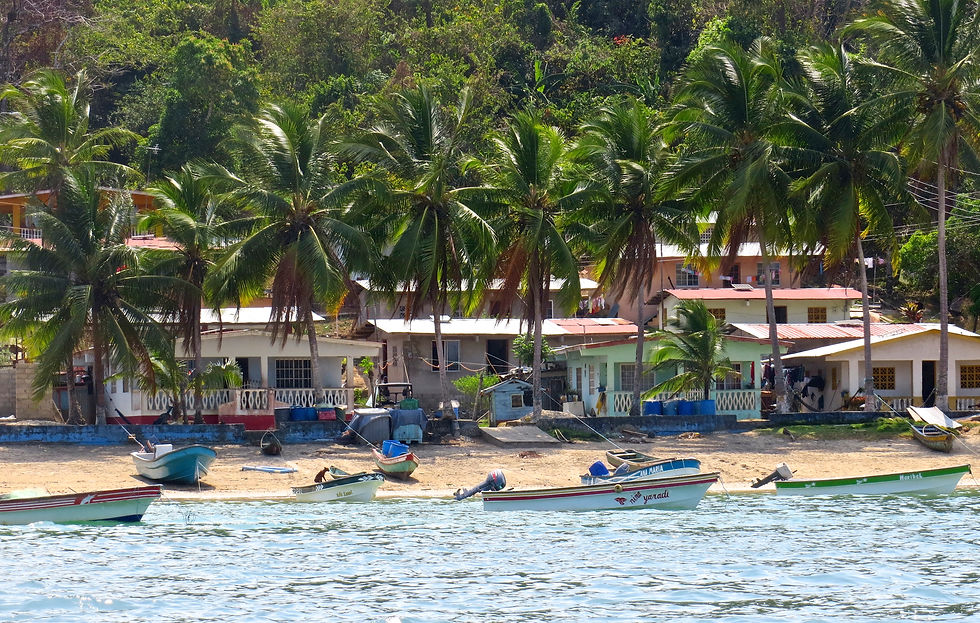
La Ensenada village

La Ensenada village
We explored two rivers both of which were full of birdlife. The first one was Rio Cacique which we floated down with our friends on SV Dignity; the second, Rio Moskito was exceptional for its small picturesque waterfall, emptying in a pool where Chuck caught a good sized pargo from shore.
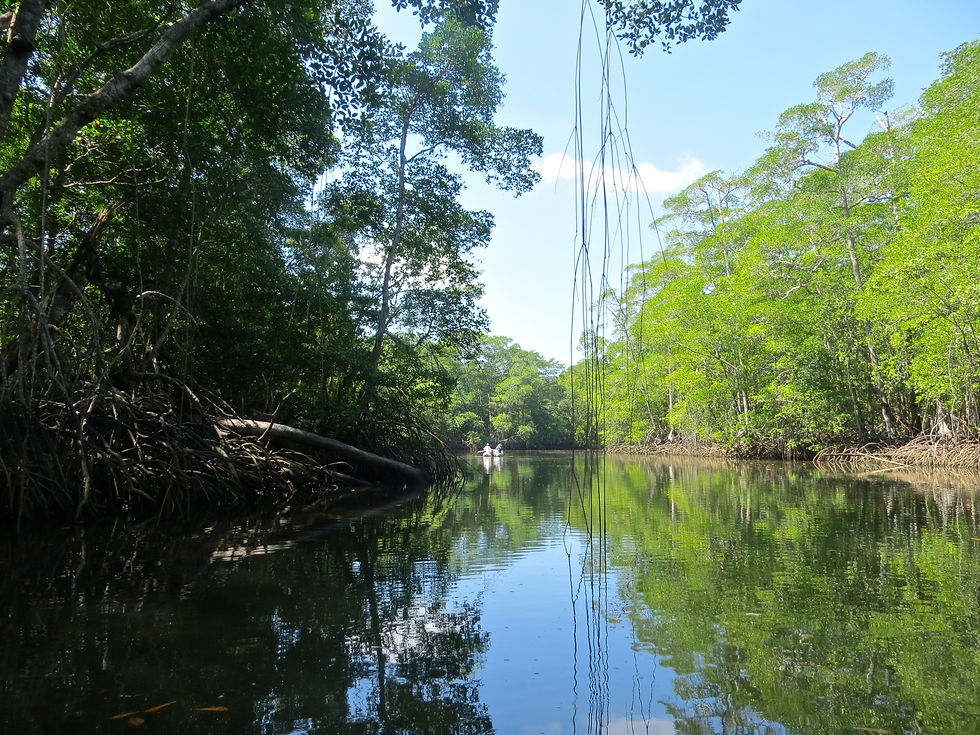
Floating down the river with SV Dignity

Floating down the river with SV Dignity

Little Blue Heron and Ibis

Little Blue Heron and Ibis

Waterfall and fish filled pool

Waterfall and fish filled pool
Visit the Perlas Islands by boat or plane....or buy your own private island.
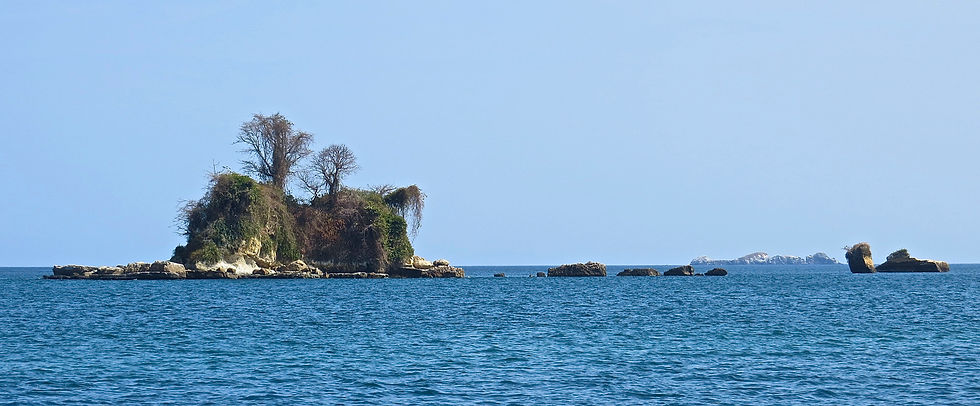

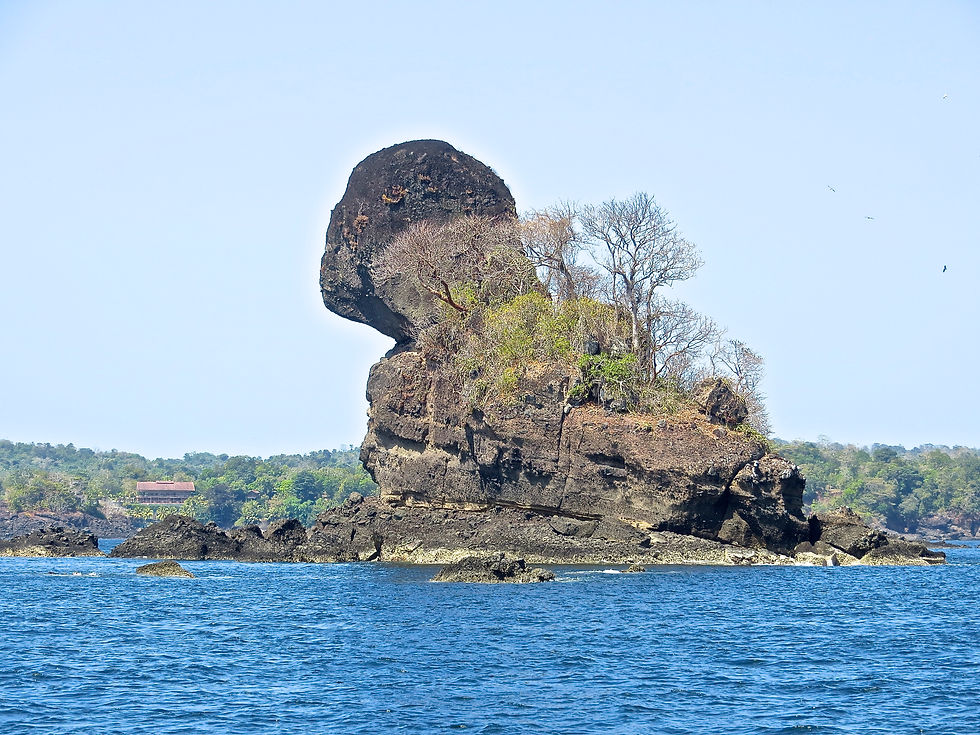
With fishing resort on Isla San Jose in the background

With fishing resort on Isla San Jose in the background
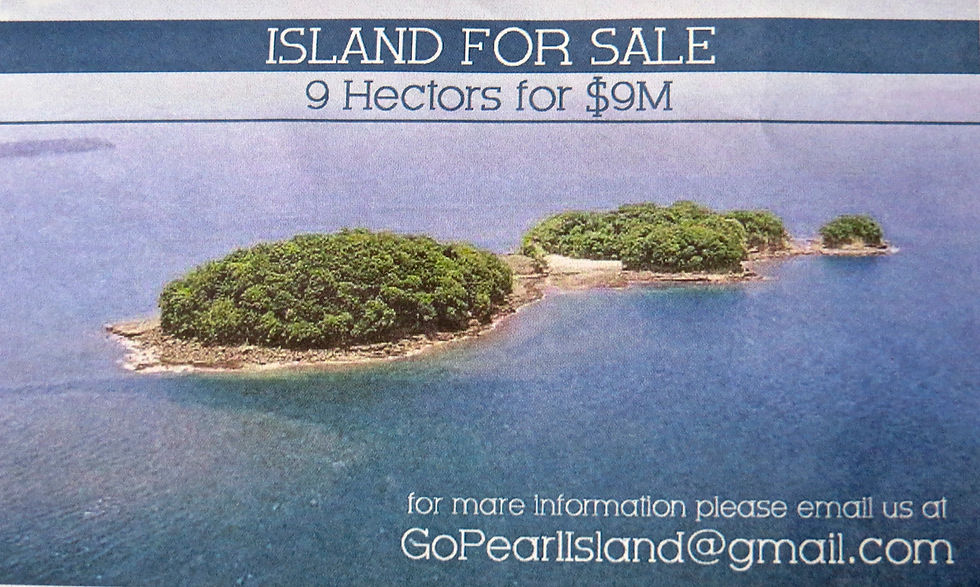
Only $9 million

Only $9 million
MORE PHOTOS: In the "Photo Gallery" for Passage Note #61
